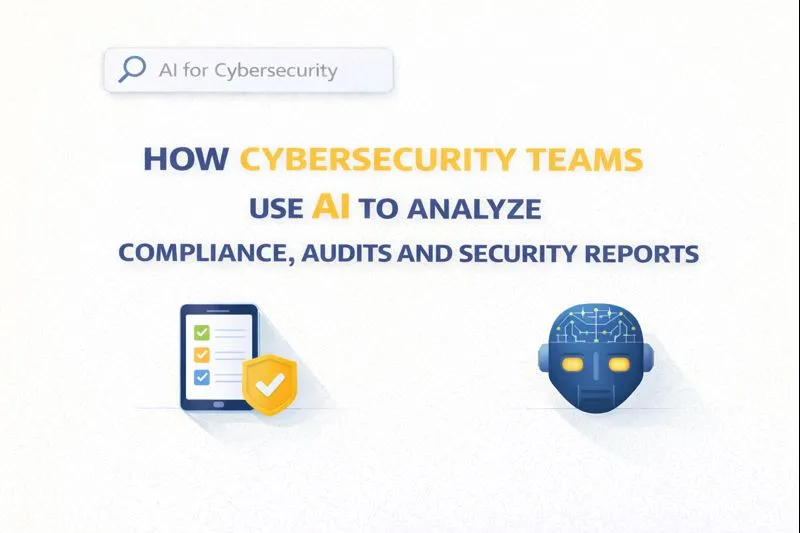From Threats to Trust: Building Cybersecurity Content That Users Actually Search For
People search to solve problems, not to admire complexity. If you want your cybersecurity content to get found, read, and acted on, you must stop guessing what people want and start giving them exactly what they typed into the search bar. That sounds simple, but too many teams still publish dense reports, jargon-heavy essays, or feature lists that nobody searches for. The result? Great tech, zero eyeballs.
Why this matters now
Data breaches are expensive and growing in scope. In one high-profile industry study, the average cost of a data breach rose dramatically, reaching roughly $4.88 million in the 2024 study period. That jump is not academic. It translates into layoffs, lost customers, and long rebuilds after an incident.
At the same time, human behavior shows up in most incidents. Large threat reports show the human element played a role in roughly two thirds of breaches, and ransomware remains a top risk across many sectors. That means people, not only tech, drive most of the damage we try to prevent. If your content doesn’t help people act differently, it won’t stop the next breach.
Match content to intent, not to your org chart
Search intent is the user’s reason for typing a query. They might be doing research or trying to fix a live problem. Professional SEO guides call this the single most important piece of the puzzle. If your content ignores intent you get either no traffic or low quality traffic that doesn’t convert.
So what does intent-driven cybersecurity content look like in practice? Break your content into three clear buckets.
Immediate triage content (for users in the moment)
These are the pages that someone lands on when their password stops working, or when they got a suspicious email at 2 a.m. Write short, action-first pages for these moments. Use plain steps, expected outcomes, and a short checklist. Example headings someone might type: “How to check if my email was hacked”, “I got a phishing email what do I do now”, “disable 2FA lost phone” or even specific queries like “how to find hidden things on someone’s phone android” when they’re looking for quick security checks on personal devices. These pages should be concise, include copy-paste commands or menu paths, and be written at an 8th to 10th grade reading level. People want to stop the bleed. Give them that.
Decision support content (for buyers and IT leads)
These are comparative, vendor-agnostic guides and threat explainers. People here ask questions like “best endpoint protection for healthcare” or “ransomware recovery checklist”. Use clear scoring, tradeoffs, and one-page summaries so a CIS or CISO can brief their leadership fast. Include estimated costs, implementation timelines, and failure modes. Cite external studies to back claims and be transparent about assumptions. Buyers distrust marketing blur. Honesty builds trust.
Education and trust content (for wider audiences)
This is long form explainers, myth-busting, and playbooks for non-technical staff. Think “what is phishing and how to spot it” or “why updates matter”. These pieces reduce fear and increase action. Pair them with quick interactive assets like a one-minute video, a printable cheat sheet, or a short quiz. People learn better when you mix formats.
Use data that matters, and show the source
Numbers increase credibility when they come from recognized authorities. Cite a breach cost study when you explain financial risk. Cite threat reports when you talk about common attack vectors. Readers judge trust by sources, not by how pretty your infographic is. For example, the large breach and cost studies I used above are from industry-standard reports that CISOs and boards read. Link them. Readers will follow.
Make content findable: SEO tactics that actually work for cyber
Keyword tools tell you what people type. Use them. Platforms like Google Keyword Planner, Ahrefs, or even Searqle can uncover what your audience is really searching for. But don’t stop there. Convert search phrases into intent-driven frameworks.
• Start with seed queries from sales and helpdesk tickets. These are gold because they come from real users.
• Map queries to pages by intent cluster. One page per intent, not one page per keyword.
• Use long-tail “how to” queries to capture triage traffic.
• Add structure: short bullets, numbered steps, and a TL;DR at the top so readers can act fast.
• Build internal links from your technical docs to your triage pages so search engines and humans find the right path.
Authoritativeness wins but people-first content converts
Google’s guidance is explicit: create people-first content that helps readers, not search engines. That means practical how-to, honest trade-offs, and better answers than competitors. If you write like a human, people will read like humans.
Make your content usable for your weakest link
If the human element shows up in most breaches, you must treat humans as the primary user, not as an afterthought. That means usability design, clear examples, and behaviorally informed nudges. Simple tests you can run: give a newcomer a task and time them, ask them to summarize the steps back to you, track completion rates on your triage pages. If completion is low, rewrite.
Bridge the trust gap with transparency and templates
Trust comes from clarity. If you offer a remediation playbook, include assumptions and escalation points. Offer downloadable templates: incident notification email drafts, executive one-pagers, and tabletop exercise scripts. Templates reduce cognitive load and increase the chance an organization will act. That builds reputation and backlinks.
Use frameworks to structure trust
Standards like the NIST Cybersecurity Framework provide a clear taxonomy for what organizations should do across identify, protect, detect, respond, and recover. When you organize content around a trusted framework, readers understand where a single article fits in their broader program. That clarity makes content sticky.
Measure what matters
Track behavior, not vanity. Good KPIs include time-to-first-action on triage pages, completion rates of remediation guides, and reduction in repeated support tickets for the same problem. Also measure whether traffic converts to leads or to fewer incidents. If a “how to secure remote desktop” page becomes your top source of incident tickets, that page is both content and product - treat it like a product.
A short checklist to get started tomorrow
Pull top 20 support tickets and map them to search intent.
Create or rewrite one triage page per top 5 urgent issues with copy-paste steps.
Add a TL;DR and a printable template to each page.
Link each triage page to a deeper “decision support” guide.
Cite recognized studies and frameworks in every decision support piece. Use the data; people will trust it.
Final note on tone and trust
People pick up on authenticity. Write like a colleague would explain something over coffee. Be honest about limits. If a fix reduces risk but does not eliminate it, say so. If a tool requires more staff time than advertised, mention it. Readers will reward candor with trust, backlinks, and referrals.




